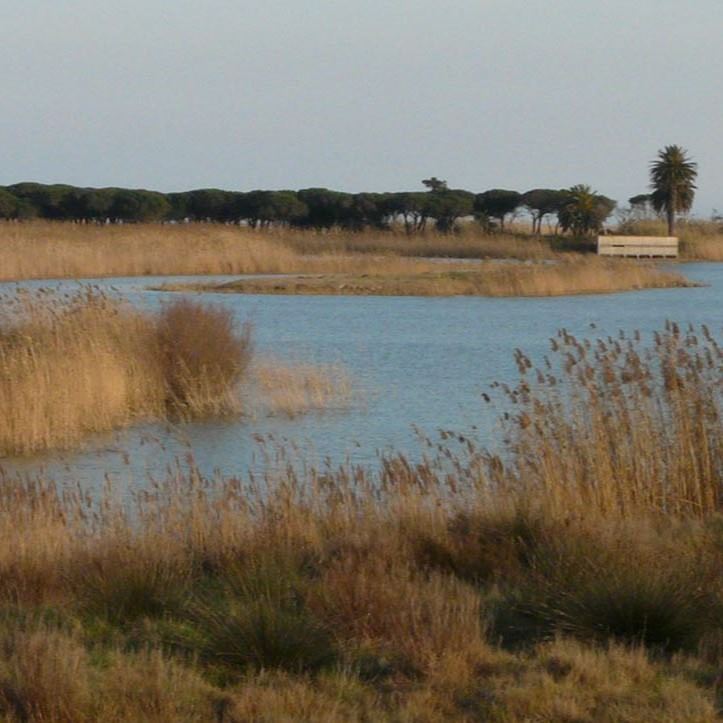IRBio researchers describe for the first time the spermatozoa of Telorchis attenuatus, an intestinal parasite of the red-eared slider turtle
A team of researchers from the Biodiversity Research Institute (IRBio) of the University of Barcelona has made a significant advance in the understanding of the parasitological diversity of the aquatic ecosystems of the Llobregat Delta. The recent study, led by Drs. Srisupaph Poonlaphdecha, Alexis Ribas, Alberto Maceda-Veiga and Jordi Miquel, has described for the first time the ultrastructural characteristics of the mature spermatozoa of Telorchis attenuatus, a parasitic trematode that affects the red-eared slider turtle (Trachemys scriptaelegans).
This work has been possible thanks to the collaboration between two IRBio research groups: the FORESTREAM group, led by Dr. Maceda-Veiga, and the Human and Animal Parasitology group, with the participation of Drs. Ribas, Miquel and Poonlaphdecha. The research has also had the collaboration of Tunisian researchers, bringing an international approach to the project.
Understanding the biodiversity of the Llobregat Delta
The results of this research have provided key information on spermatological diversity within the Plagiorchioidea superfamily, to which Telorchis attenuatus belongs. This new information is crucial to clarify the taxonomy of a complex group of trematodes that includes 21 families. The discoveries could help establish more precise evolutionary relationships within the digeneids, resolving controversies that have lasted for decades. "Resolving the taxonomy of a group well is the first step before raising ecological questions that use this group as a study model," the research team highlights.
The field work was initiated from the project "Vertebrates of peri-urban wetlands as vectors of zoonoses" (2022), granted by IRBio and led by Drs. Ribas and Maceda. During the visits to the Llobregat Delta, red-eared turtles stood out as one of the most frequent species, which opened the possibility of studying them with the logistical support of the managers of the Natural Spaces of the Llobregat Delta.
Electron microscopy to reveal ultrastructural details
The study, carried out using transmission electron microscopy, has revealed that T. attenuatus spermatozoa have a filamentous structure, with two 9+1 type axonemes, two mitochondria, cortical microtubules and a characteristic ornamentation of the plasma membrane. This detailed description contributes to expanding knowledge about the sperm morphology of Telorchiidae and improves understanding of the evolutionary relationships within the group.
Importance of the Llobregat Delta and local support
The ecosystems of the Llobregat Delta are highly relevant for this type of study. Despite being an area close to densely populated urban areas, there are many aspects of its ecosystems that are still little known, including the biological cycles of parasites and their taxonomic diversity. "Parasitological studies in the Delta are essential for the conservation of biodiversity and public health, especially in an area with strong anthropic pressure and a large influx of visitors and migratory animals," explain the researchers.
The research has been possible thanks to the support of various local institutions, including the managers of the Natural Spaces of the Llobregat Delta, the Baix Llobregat Agricultural Park and different local councils, which have facilitated the logistics necessary to carry out the study.
The researchers propose to delve deeper into ecological and taxonomic aspects of parasitic helminths in the aquatic systems of the Llobregat Delta. This research opens the door to future collaborations to explore other ecological or evolutionary questions and expand knowledge about the biodiversity of this important ecosystem.
The study published in ScienceDirect, entitled "Sperm characteristics of the Telorchiidae (Digenea, Plagiorchioidea): First ultrastructural data on Telorchis attenuatus an intestinal parasite of Trachemys scripta elegans" represents a fundamental contribution to the understanding of parasitological diversity and its implications in the ecosystems of the Llobregat Delta.
